 W
W3-D Docking Mission is a simulation game for the Apple II written by Chris Oberth. The game was published by Programma International and The Elektrik Keyboard of Chicago, Illinois in 1978.
 W
WAdventureland is the first text adventure video game for microcomputers, released by Scott Adams in 1978. The game involves searching for thirteen lost artifacts in a fantasy setting. Its success led Adams to form Adventure International, which went on to publish thirteen similar games in the Adventure series, each in different settings.
 W
WAir Raid is a fixed shooter video game published by Small System Software for the TRS-80 Level I or II in 1978. It is an adaptation of the game TARGET, developed for the Sol-20 by Steve Dompier.
 W
WAir Traffic Controller is a 1978 video game written by air traffic controller David Mannering, and released by Creative Computing for the TRS-80 Model I and Exidy Sorcerer in 1978, and for the Apple II, Apple II Plus and Sol-20 in 1979. It was later rewritten by Will Fastie and Bill Appelbaum for Data General AOS in 1980, and ported to MS-DOS for release by PC Disk Magazine in 1983.
 W
WAir-Sea War and Battle are two games that were released together as the fourth cartridge in the official Philips line of games for the Philips Videopac. In North America, the same game was released as Armored Encounter! / Subchase! for the Magnavox Odyssey² console.
 W
WAndroid Nim is a version of the mathematical strategy game Nim programmed by Leo Christopherson for the TRS-80 computer in 1978. A version for the Commodore PET by Don Dennis was released July 1979. Android Nim features real-time animation of the androids on a TRS-80.
 W
WAstro Battle 2009 is a Space Invaders clone published by Bally Manufacturing in 1978 for the Bally Astrocade arcade system.
 W
WAvalanche is an arcade game designed by Dennis Koble and released by Atari Inc. in 1978. The object is to catch falling rocks with a controllable set of paddles that diminish in number and size as the rocks fall faster and faster. The concept gained a much wider audience after Activision released an unauthorized adaptation in 1981 as Kaboom! for the Atari 2600. The only official home port of Avalanche is for the Atari 8-bit family.
 W
WBasketball is an Atari 2600 video game written by Alan Miller and published by Atari, Inc. in 1978. The cartridge presents a simple game of one-on-one basketball playable by one or two players, one of the few early Atari 2600 titles to have a single-player mode with an AI-controlled opponent. Miller wrote a version of Basketball for the Atari 8-bit family with improved graphics, published in 1979. That same year an arcade version similar to the computer port was released by Atari but in black and white. The arcade game was written by Chris Downend.
 W
WBeneath Apple Manor is a roguelike game written by Don Worth for the Apple II and published by The Software Factory in 1978. Higher resolution "Special Editions" were released in 1982 and 1983, through Quality Software, for the Apple II and Atari 8-bit family. It was one of the first video games to use procedural generation.
 W
WBrain Games is a collection of memory video games programmed by Larry Kaplan and released by Atari, Inc. for the Atari 2600 in 1978. It is a group of memory games, in which the player is faced with outwitting the computer in sound and picture puzzles. It can be played as either a one or two player game. In place of using the standard joystick, Brain Games utilizes the 12-button keypad controller.
 W
WCasino is a collection of card games for the Atari 2600 programmed by Bob Whitehead and published by Atari, Inc. in 1978. Supporting up to four players, the game is controlled by the paddle controllers.
 W
WClowns is a black and white arcade game released by Bally Midway in 1978. It is similar to Exidy's Circus from the prior year, in which the player controls a seesaw to propel two clowns into the air, catching balloons situated in three rows at the top of the screen. It was released on cartridge for Commodore VIC-20 in 1982 and for the Commodore 64 in 1983.
 W
WCodebreaker is a video game released in 1978 by Atari, Inc. for the Atari VCS. It was in the first wave of Atari VCS games to follow the original nine launch titles. It was one of three cartridges to accompany the introduction of the Atari keyboard controller, an add-on launched in response to claims of false advertising that the VCS is a "computer".
 W
WThe Coleco Telstar Marksman, commonly abbreviated as Telstar Marksman, is a first-generation home video game console that featured a light gun. It was released by Coleco in 1978. Because it had a manufacturer-set number of games, it is considered a dedicated console. It was part of the Coleco Telstar series Pong-based home video game consoles; it is essentially a Coleco Telstar Colortron bundled with a "3 in 1" light gun and two shooting games. The Marksman light gun is a pistol that features an attachable stock and barrel. It is similar in this regard to the later-released Stack Light Rifle and the Sega Menacer. The elongated barrel included a simple aiming sight. In addition to the light gun, the system featured two paddle controllers built directly into the console. Its reported features included "on-screen digital scoring" and three different difficulty settings. It required two nine-volt batteries or Coleco's Perma Power AC adaptor to power the system.
 W
WThe Colorsport VIII is a dedicated first-generation monochromatic home video game console made available to consumers in 1978 by Granada Electronics in the United States. The console is based on the MOS Technology MPS 7600-001 Pong-on-a-chip like the Coleco Telstar Arcade console.
 W
WA Game of Concentration is a video game developed by Atari, Inc. and released in 1978 for the Atari VCS. It was programmed by Jim Huether, and is a video version of the classic memory game. It was one of a handful of games that used Atari's keypad controllers.
 W
WCosmic Conflict from 1978 is the 11th official game released for the Philips Videopac console.
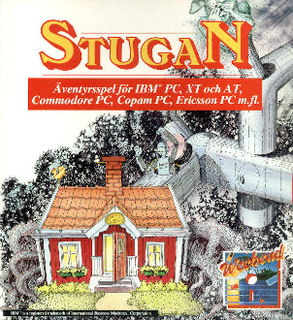 W
WThe Cottage is an adventure video game that was initially made available in 1978 for the DEC-10 mainframe computer Oden in Stockholm, and later published by Scandinavian PC Systems for IBM PCs in 1986 in Swedish, Danish, Norwegian and English. It was the first publicly available Swedish adventure game and one of the first commercial Swedish video games.
 W
WDepth Charge is a game for the Apple II family of computers, created in 1978 by programmer Chris Oberth and published by The Elektrik Keyboard of Chicago, Illinois.
 W
WFire Truck is a black-and-white 1978 arcade game developed and published by Atari, Inc.. According to GamesRadar, it was the earliest video game with cooperative gameplay where two players have to work together. A single-player version was released as Smokey Joe. It is internally identical to Fire Truck.
 W
WFlag Capture is a video game published in 1978 by Atari, Inc. for the Atari 2600. It is based on the traditional game Capture the flag. The game was designed and programmed by Jim Huether. The cover art for the game was by John Enright.
 W
WFootball is a 2-player 1978 arcade and Atari 2600 console-game. It was developed and published by Atari, Inc.. In this game, the sport of American football is emulated, with players represented by Xs and Os. The game was one of the most popular arcade games in its day. In 1979, Atari released a more challenging four-player version of the arcade game programmed by Dave Theurer, the creator of Missile Command and Tempest.
 W
WFrogs is a single-player action arcade game released by Gremlin in 1978. It is the first video game with a jumping character. The game's graphics are "projected" by laying the monitor flat on its back and reflecting the computer-generated graphics of the frogs and flies toward the player via a mirror at a 45-degree angle.
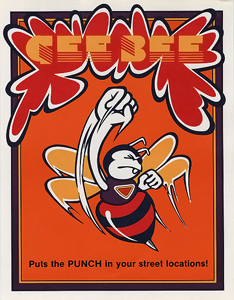 W
WGee Bee is a block breaker/video pinball hybrid arcade game developed and published by Namco in 1978. The player controls a set of paddles with a rotary knob, with the objective being to score as many points as possible by deflecting a ball against bricks, pop bumpers and other objects in the playfield. It was developed by Toru Iwatani, known as the creator of Pac-Man and Pole Position. Outside Japan, it was published by Gremlin Industries.
 W
WHangman is a video game based on the pen-and-paper game of the same name released in 1978 by Atari, Inc. for the Atari VCS. The game was programmed by Alan Miller, who later cofounded Activision, with cover art by Susan Jaekel. Hangman contains 510 words divided into four difficulty levels.
 W
WHuman Cannonball is a non-military variant of an artillery video game released in 1978 by Atari, Inc. for the Atari VCS. The goal is to launch a performer from a cannon so they land in container of water supported by a tower. The game was in the first wave of Atari VCS games after the original nine launch titles. It was also among the first games for the console to be discontinued by Atari.
 W
WThe Interton Video 2501 is a dedicated first-generation home video game console that was released by Interton in 1977. It is the successor of the Interton Video 2400 and the predecessor of the Interton Video 2800. It can output the games in color.
 W
WThe Interton Video 3000 is a dedicated first-generation home video game console that was released in Germany in 1976 by German manufacturer Interton and sold by Quelle. Due to the AY-3-8500 chipset from General Instrument, the console has six integrated games: Tennis, Football, Practice, Squash, Skeet and Moving target. It had a list price of 198 Deutsche Mark (DM).
 W
WThe Interton Video 3001 is a dedicated first-generation home video game console that was released in 1978 by Interton. It is a Pong clone console and the successor to the Interton Video 3000 and the predecessor of the Interton Video Computer 4000. It could output games in color.
 W
WMulti-User Dungeon, or MUD, is the first MUD and the oldest virtual world in existence.
 W
WCartridge number 1 in the official Philips line of games for the Philips Videopac contains three games: Race, Spin-out, and Cryptogram. In the United States, it was distributed for the Magnavox Odyssey² as Speedway / Spin-out / Cryptologic.
 W
WSanta Paravia en Fiumaccio is a video game in which each player becomes the ruler of a fledgling Italian city-state around the year 1400. The goal of the game is to become king or queen; to do so the player must manage their city-state so that it may grow.
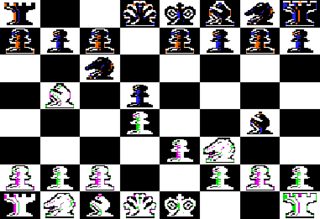 W
WSargon is a line of chess-playing software for personal computers. The original SARGON from 1978 was written in assembly language by Dan and Kathleen "Kathe" Spracklen for the Z80-based Wavemate Jupiter III.
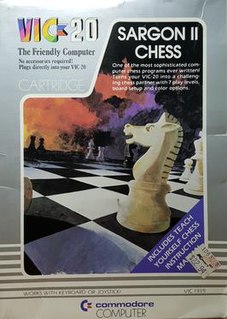 W
WSargon II is a sequel to Sargon. Both are computer chess programs for home computers.
 W
WSky Diver is an arcade video game designed by Owen Rubin, and released by Atari, Inc. in 1978. It was ported to Atari 2600 in 1979 by Jim Huether. Its interface is a simple third-person view of a parachuting drop zone. Sky Diver is a two-player game, although one player can play.
 W
WSlot Racers is a video game for the Atari VCS published by Atari, Inc. in 1978. It was the first game written by Warren Robinett, who went on to create one of Atari's most successful games for the 2600, Adventure.
 W
WSpace Battle is a 1978 video game developed by Level IV for the TRS-80 16K Level II microcomputer.
 W
WSpace Invaders is a 1978 arcade game created by Tomohiro Nishikado. It was manufactured and sold by Taito in Japan, and licensed in the United States by the Midway division of Bally. Within the shooter genre, Space Invaders was the first fixed shooter and set the template for the shoot 'em up genre. The goal is to defeat wave after wave of descending aliens with a horizontally moving laser to earn as many points as possible.
 W
WSpace War is a video game cartridge released by Atari, Inc. in 1978 for the Atari Video Computer System. The game is a version of Spacewar!, the 1962 computer game by Steve Russell. It was released by Sears as Space Combat, for its Atari compatible Tele-Games system.
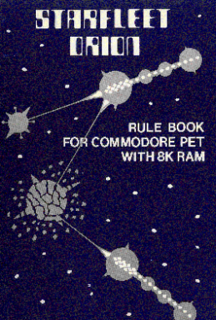 W
WStarfleet Orion is a 1978 science fiction strategy game written and published by Automated Simulations. It appears to be the first space-themed strategy game sold for microcomputer systems. The game was originally written in BASIC for the Commodore PET, but later ported to other early home computer platforms including the TRS-80 and Apple II. The game was something of a success, leading to a string of successes for the company, notably the major hit Temple of Apshai.
 W
WTime Trek is a Star Trek computer game published by Personal Software in 1978. Two similar but unrelated games were published under this brand in 1978, one for the Commodore Pet by Brad Templeton and one programmed by Joshua Lavinsky for the TRS-80 4K Level I or Level II microcomputer.
 W
WThe Turnir is a dedicated first-generation home video game console that was manufactured by the Ministry of the Electronics Industry and released in 1978 only in the Soviet Union. It was manufactured between 1978 and 1982 and is the only known Soviet video game console that uses the AY-3-8500 chipset from General Instrument. The price for the system varied from 150 Soviet rubles in 1978 to 96 rubles in the late 1980s. The console uses an integrated AC adapter with a voltage of 9 volt and has a mass of 2.5 kg.